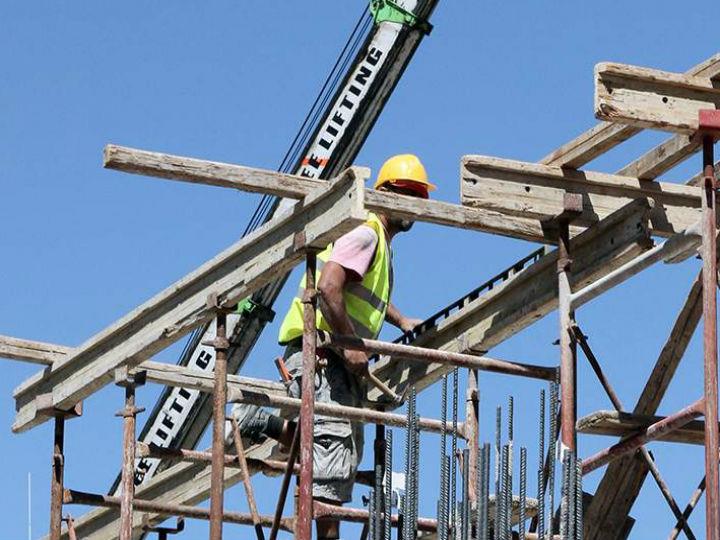by Katherine Davisson and Joseph Losavio*
-Technologically advanced, sustainable and resilient infrastructure can pave the way for an inclusive post-COVID economic recovery.
-Low and middle-income countries could see $4 return for every $1 spent on building infrastructure that focuses on long-term resilience.
-Governments should ensure investments go to infrastructure projects that are sustainable, technologically advanced and resilient.
The economic fallout caused by the COVID-19 pandemic is forcing governments around the world to come up with policies for stimulating the global economy. Many are considering a tried-and-true method to boost economies in the short-term and provide wide societal benefits in the long term: infrastructure investment.
Countries around the globe are set to launch the biggest round of infrastructure investment since the post-2008 financial crisis stimulus measures. It’s easy to see why: the demand is enormous. The world is on-trend to face a $15 trillion gap between the infrastructure investment needed and the amount provided by 2040. On the supply side, when 1% of GDP is invested in infrastructure, economic output increases by about 0.4% in the same year and by 1.5% four years later.
Building in a new world
Before the shovels hit the dirt, its worth understanding how the world of 2020 is different from the world of 2008.
The infrastructure sector, long a laggard in embracing innovation, has worked hard to close the technological gap with other industries, and disruptors have transformed the way we design, build and manage infrastructure systems. Attitudes toward the importance of addressing the climate crisis have also changed. For example, since 2008, the percentage of US adults who say dealing with global climate change should be a top priority for the president and Congress has risen 14 points.
The ongoing coronavirus crisis has amplified the growing calls for resilient and adaptable infrastructure that can effectively operate during moments of crisis. Given this big opportunity, it is imperative that when the nations of the world look to embark on infrastructure investment programs, they strive to provide infrastructure that is sustainable, technologically advanced and resilient. It is the financially, environmentally, and socially responsible thing to do for the world.
The economic benefits
Economically, the case for technologically advanced, resilient and sustainable infrastructure is clear. Low and middle-income countries alone could see a net benefit of $4.2 trillion from investing in infrastructure that prioritizes future-focused resiliency. That’s a $4 return for every $1 spent.
Integrating new technologies during the design, construction and operational phase of an infrastructure asset can significantly lower the cost while improving the functionality. Artificial intelligence (AI), advanced data analytics, fintech, cloud computing, 5G, new materials, renewable energy technology and 3D printing are just a few of the innovations changing the global infrastructure landscape. When used, they can decrease project cost, compress construction time, reduce community disruption, minimize environmental harm and increase safety.
The benefits of utilizing technology to plan, build and operate sustainable infrastructure systems have won over many decisionmakers, including in the UK, which is planning to implement a national digital twin program to connect all aspects of its infrastructure system onto one secure network. Digital twins are computer models that combine AI, data analytics and machine learning to produce a digital version of a physical object. They help optimize the planning and operation of infrastructure by providing valuable insights in near-real-time. The UK expects the program to produce £7 billion in value a year from cost savings and efficiency gains from more sustainable management of the country’s infrastructure.
The environmental benefits
Dividends for the environment are also apparent. In energy infrastructure, long a major source of global carbon emissions, renewable technologies have made enormous strides. Wind and solar power are now the most cost-effective modes of power generation across more the two-thirds of the world, including in the US, China, Brazil and India.
But building infrastructure that encourages environmental stewardship isn’t merely limited to the green energy space. Infrastructure’s burgeoning technological revolution ensures that all aspects of infrastructure now have the ability to contribute to ecological preservation.
The fast-growing Port of Brisbane on Australia’s east coast found itself in dire need of a solution for accommodating ever-growing container ships. In past years, the operators would likely have simply dredged the seafloor, an expensive and environmentally damaging exercise. They instead chose to utilize cloud-computing technology that assesses currents, tidal levels, wind patterns and other data to provide forecasts that allow the port to guide larger ships into the harbour depending on environmental conditions. In use since 2017, this program has allowed the port to increase capacity without dredging, allowing for even larger ships to access the port, all while improving operational safety, planning ability, sustainability and future-readiness.
The societal benefits
Not to be forgotten are the benefits for our societies of building advanced, sustainable and resilient infrastructure. We must create social infrastructure, like schools and hospitals, that use the latest innovations and techniques that can withstand the evolving challenges of our times, from natural disasters to pandemics.
For example, Nantucket Cottage Hospital, a small island hospital off the east coast of the US, is using the latest in technological and sustainability advances to create a medical facility that is adaptable to a variety of potential challenges in the coming years. By focusing on environmental contingency planning, proper material use, emergency access to utility services and space adaptability, the hospital is protected against natural disasters and more long-term changes in environment and patients surges - crucial on an island whose population swells from 11,000 to 50,000 in the summertime.
Similarly, the developers of the Michael Tippet School in the London borough of Lambeth set sustainable innovation and resilience as guiding principles. The project managers chose laminated timber-an increasingly popular building component as a primary construction material. Laminated timber is not only environmentally friendly compared to more carbon-intensive options like concrete and steel, but it can also be assembled quickly and onsite, saving time and money. The result was an airy, adaptable space that could easily adjust to the changing requirements of this special needs school.
The backbone of the economy
This infrastructure revolution will not happen on its own. Though innovation has flourished, the sector lags behind others in technological sophistication. Existing innovations need to be more widely embraced, and new innovations need more nurturing - both areas where better cooperation with governments could yield positive results.
Community engagement also needs to be increased. Working with local stakeholders to deliver updates and providing opportunities to receive community feedback at all stages of an infrastructure project will greatly increase the chances of success. Projects should also focus on adaptability and replicability. Finding and disseminating successful models can eliminate trial and error periods that cost time and money.
It is often said the infrastructure is the backbone of the economy. We must ensure that that backbone is prepared to carry the weight of the future. Committing to using this opportunity to build advanced and resilient and sustainable will do just that.
*Head of Shaping the Future of Cities, Infrastructure and Urban Services, World Economic Forum and Community Specialist, Infrastructure and Development Initiatives, World Economic Forum
**first published in: www.weforum.org




 By: N. Peter Kramer
By: N. Peter Kramer
